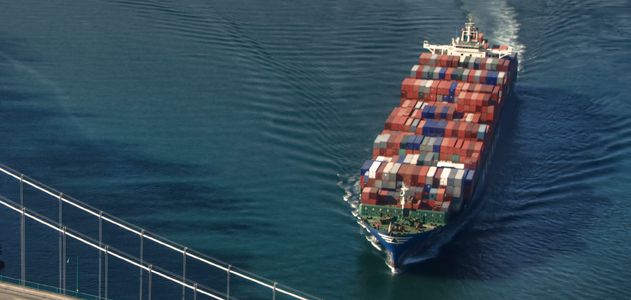What You Know About Harbour Towage and Pilotage

It is commonly accepted that pull tasks are standard for boats’ groups and that securing gatherings will deal with them productively and quickly. Accordingly, ace pilot trades don’t normally address this issue. Nonetheless, so as to guarantee powerful hold towage activities, it is basic that the applicable data is traded between the ace and the pilot already, so the securing gatherings can be called to their stations as expected, completely advised on the subtleties of the activity. Every day involvement with a Cash to master division shows that, shockingly, the quantity of less-talented securing parties is on the expansion. This absence of aptitude may bring about postponements in making sure about a pull, squeezing the team and consequently expanding the danger of individual injury or of the vessel cruising in hazardous conditions, for example in thick rush hour gridlock, before the pull is prepared.
Trade data already
The pull data can be traded during the journey under the pilot’s recommendation, rather than being traded at the hour of pilot boarding, when there are other navigational needs to be tended to. Toward the beginning of the towing activity the gatherings should all be at their securing stations sooner or later and have the hurling lines prepared at the right/required position. The ace ought to talk about the ETA at the meeting point and guarantee that he summons the team on schedule, taking into account the separations to the securing stations to be canvassed as expected, without the need to run. On the off chance that the activity is to occur around evening time, the group ought to have plentiful chance to wake up and get ready for the period out there, potentially in unfavorable climate conditions.
Data needed to be passed from pilot to ace
Because of the various sorts and sizes of pulls, there are a wide range of kinds of harbor towage moves, so the ace should discover the accompanying subtleties from the pilot so as to give them to his team:
– boat’s lines or pull line
– sort of tow wire (steel, engineered, size, sign of their size)
– strategy for getting the tow wire ready or the boat’s lines to the pull. (most generally for pull’s lines: slight hurling line from the vessel to get a bigger size courier rope from the pull, which can be directed to the twisting drum of a winch so as to hurl on board the tow wire. When utilizing boats’ ropes, the other alternative is to bring down a boat’s rope or send it over with a hurling line. Most pulls will, be that as it may, not take a brought down line when in progress), just while withdrawing from the billet
– position for disregarding the hurling line (toss from the boat’s shoulder, which fairlead the hurling line ought to be taken through)
– greatest speed for making sure about the pull, so the extension group can screen
– bollard pull of the tug(s)
– VHF channels to be utilized for working with the pulls
Data needed to be passed from ace to guide
The ace ought to give the accompanying data to the pilot:
– SWL of the securing/towing hardware
– Which fairleads are reasonable for making sure about the pulls. In the event that they are askew and just one pull is to be utilized, this must be explicitly brought to the consideration of the pilot.
– Pushing point quality, whenever known. On the off chance that no pushing focuses are demonstrated on the structure, yet the boat has a fortified belt surrounding, it is critical to pass on this reality to the pull ace.
What the team should know
The official in control must guarantee that the securing party knows which bollard(s) will be utilized for the tug(s), how the courier line will be driven towards the distorting drum and how the tow wire will be visited so as to permit the strain to be removed the courier line and the delicate eye to be put over the bollard. They ought to likewise know about the delivering methodology.
So as to maintain a strategic distance from interruption, if there has been a group change, the new team ought to acclimate themselves with the securing gear before taking their stations unexpectedly.
Customary gatherings ought to be held to help the team to remember the dangers of taking care of tow wires and to examine the methods.
During the activity
The orders utilized by the official in control ought to be clear and surely known by the deckhands; standard wording might be created, subject to the boat’s working language.
The group should wear calfskin working gloves or gloves produced using identical materials when taking care of a tow wire, never cotton gloves. Loose work apparel ought to likewise be evaded. Overalls ought to be tight, particularly around the wrists and lower legs.
Numerous genuine individual injury episodes in securing territories include separating lines. It is in this way imperative to take note of that a “snapback zone” exists when a securing line is under strain. Teams should consider during tasks and it might be a smart thought to demonstrate these regions forever on the deck. When the pull is made sure about, all team remain back from the snapback zones. Group individuals ought to likewise be cautioned to be careful with hands and fingers: unexpected rascals in the tow wire while accepting the line or delivering the pull can without much of a stretch lead to individual injury.
The official in control should consistently be in visual contact with the pull during making sure about up, so he can trade hand signals with the pull team, which is generally in a way that is better than attempting to deal with a walkie-talkie VHF in blustery conditions. There are ships in which the ramparts are high to the point that the pull team can not see anyone on the (forecastle) deck of the vessel, or anything that goes on there. In such conditions, it is significant to have one individual in a particular area for flagging outwardly to the pull. The group should consistently motion toward the pull when the tow wire is made sure about and the pull can securely begin applying power. Status of the tow wire ought to likewise be affirmed to the ace (made sure about, in the water, propeller cleared).
Just a reasonably weighted hurling line ought to be utilized. Monkey’s clench hands ought not have extra weight, yet a hurling line ought not be tossed without a monkey’s clench hand. The last might be overwhelmed and might be difficult to get across to the pull. The group ought to have a subsequent hurling line prepared to toss on the off chance that the first should wind up in the water. The boat’s group ought to consistently caution the pull team before sending the hurling line over. The group ought to never utilize a thick ewallet service to toss to the pull, rather than an ordinary hurling line: the heaviness of the line descending may harm the pull team; it is likewise more hard to integrate two courier lines (a rope courier line will regularly be a three strand polypropylene rope of 24mm width).
A tow wire ought to never be gotten from beneath, yet consistently from above.1 If the wire must be delivered rapidly in a crisis, it is consistently simpler to simply deliver your grasp on the wire and let gravity accomplish the work than to pull your fingers from underneath the wire.
The courier line should never be detached from the tow wire. As another option, subsequent to making sure about the wire over the bitt, the shackle can be separated from the delicate eye of the tow wire and reconnected quickly, over the wire behind the delicate eye, as a “running” shackle. This gives a way to give adequate capacity to the tow wire to make enough leeway with the goal that the delicate eye can be lifted effectively from the bollard. In the event that this isn’t done, the shackle associating the courier line to the tow wire ought not be permitted to get stuck between the bollard and the tow wire. This would cause a sharp curve in the tow wire under burden, which may make it snap. The tow wire ought to never be halted by basically putting it at hand and remaining on it; the wire is excessively weighty and you might be lost your feet or hauled along. Intense wounds will bring about most cases. The team ought to likewise be careful with “winding” courier lines when they are delivered and run out. They could truly hurt somebody upon sway.
Typically, the bow pull will have no issues when the tow wire is delivered in one go; the pull will be moving endlessly from the vessel and there will be little danger of the tow wire winding up in the pull’s propellers. Be that as it may, the team ought to consistently attempt to get affirmation from the pull of how they need this done. The harsh tow wire should consistently be delivered in a controlled manner (loosened away by methods for the courier line, in co-appointment with the pull group). At the point when you let it go in one movement, it will most presumably wind up in the pull’s propellers.













